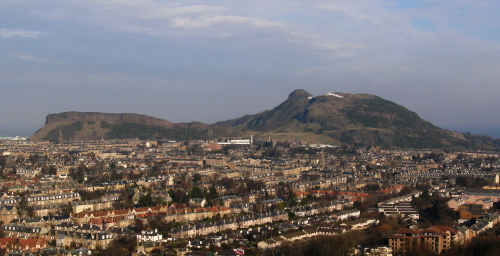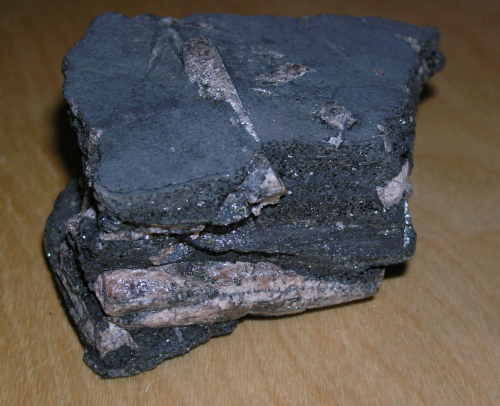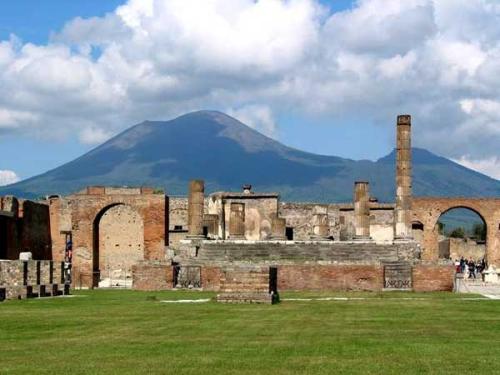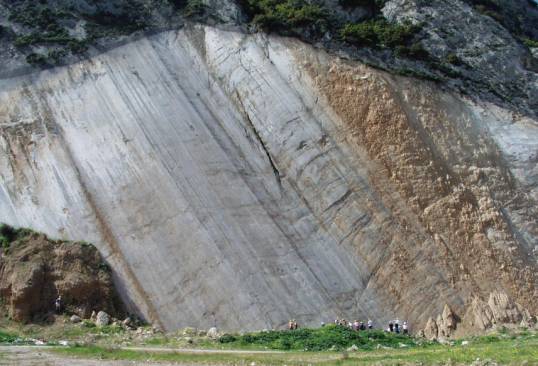This month’s Accretionary Wedge was sparked by the discussions surrounding the geology-oriented “100 things” meme that traversed the geoblogosphere at the end of last year. Geotripper wants us to come up with a more personalised version.
What are the places and events that you think should all geologists should see and experience before they die? What are the places you know and love that best exemplify geological principles and processes?
As I said at the time, I’m a little uneasy with these sorts of list (I’m not a checklist person, it seems); people can all too easily lose sight of the reasons for going somewhere, beyond the gratification of ticking them off. So I’m going to focus on the second part of the question: I’ve tried to identify occasions in my geological journey so far where my perspective has been broadened, and my understanding has been catalysed, by something that I have seen, and generalised from those examples. You don’t need to retrace my footsteps physically to follow my intellectual journey, should you wish to: in most cases, there are many places on the planet that they can be found.
-
An angular unconformity. There is a reason that this is the original icon of Deep Time: the vast amounts of time required to lay down sediments, then tilt and erode them, then deposit some more sediments, and often then tilt them, just leap out at you right from the outcrop.
On a more general level, they’re also a great example of the complicated geological history that can be extracted from even a single exposure, if you know how to look. My first year geology field trip on the Isle of Arran included a stop at an exposure of Hutton’s original unconformity; more recently I’ve posted on the one beneath Table Mountain in Cape Town, and there’s also the Great Unconformity in the Grand Canyon.
- The centre of a stable continental craton. I’ve waxed lyrical on a number of occasions about how mind-blowing it is to wander over rocks that are billions of years old, yet have sailed through the intervening time almost untouched. Of course, this only works if you’re aware of how how old they are.
- Jarring geological contrasts. When I was doing some geological outreach for National Science Week a few years back, I always enjoyed playing a game with the Old Red Sandstone. We’d show it to the children, and ask them where they thought it might have formed. Once we’d established that it looked like it came from a desert, we’d get them to guess where it came from. Seeing their expressions when we informed them that it was actually from Scotland (it’s actually the overlying unit in the unconformity pictured above) was most entertaining. Seeing a big contrast between the current environment and what the rocks tell you about the climate in the past – be it desert rocks in the Scottish Highlands, marine fossils at the top of a mountain (including Mount Everest), or glacial rocks in the desert – is a simple and powerful illustration of how geological forces have reshaped our planet.
-
Nature vs Civilisation. One of my earliest experiences of geological consciousness-raising was my visit to Pompeii. It’s an archaeological treasure of, course, but it’s also an eerie place, and not just because of all the weird body casts they have lying around. Everywhere you looked up, your eye was drawn to the brooding outline of Vesuvius.
Visiting Pompeii, or Chaiten, or Sidoarjo, reminds us (rather topically, as it turns out) that civlisation is at the mercy of geological forces, and that it’s a pretty good idea to work to understand them.
-
An active fault scarp and raised terraces. In regions of active tectonics, you can sometimes find the scarps created by movement on a fault during an earthquake. If the fault has been active for long enough, and the lithology is right, you can generate some truly impressive topography. Note the striations that indicate the sense of movement.
If you’re near the coast, on the uplifted side of the fault you often see a stepped topography; these marine terraces are wave cut platforms eroded flat at times of high sea-level, and then lifted out of the reach of the sea by sequential earthquakes (higher is older). You’re seeing the process of mountain building broken down into its most fundamental steps. I’ve seen all of this on a trip to Greece (the Gulf of Corinth is an active rift graben, and striated fault scarps and uplifted terraces abound).
-
Crazy deformation. Of course, this might not be as fun for everyone, because I’m one of those weird people who loves structural geology, but when it comes to cool geology nothing beats some really extreme folding.

source: EarthwatcherThinking about how you can get originally flat and parallel beds into this configuration can give you a headache, but it also really hones your 3 and 4-D visualisation skills. These recumbant folds (which have been rotated by ongoing regional deformation) are found in Millook Haven, in North Devon (just across the Bristol Channel from the Pembrokeshire coast), and I’ve had similar structural fun marking mapping projects from Cantabrians in Northern Spain (which were, I’ve just realised, deformed as part of the same tectonic episode). The best place to look is regions of ‘thin-skinned’ thrusting where things that have strongly deformed without being buried too deeply; the edges of mountain belts are a good bet, so presumably theres some cool examples in the Appalachians (anyone?).
- An active volcano/geothermal field. Because some things are just too cool not to see. New Zealand is good for this (I really enjoyed visiting White Island), and Iceland and Yellowstone are high on my ‘when I actually have some money’ list.
-
An eroded, extinct volcanic caldera. An example of how the old cliche “the present is key to the past” can be inverted – looking inside the plumbing of an old volcano helps us to understand the behaviour of modern ones. There’s some nice ones in southwest Spain, although I now have at least one right on my doorstep that demands a bit of outcrop bloggery before too long.

-
The contact aureole of a large igneous intrusion. A nice insight into metamorphic processes, as you head towards the intrusion and see the gradual transition from unaltered country rock, to stuff that is still recongizably the same but with weird new minerals growing in it, to really altered stuff. My most recent experience with this was when I visited an mine in the contact aureole of the Bushveld complex, where the rocks were packed with large and lovely andalusite (I forgot to include a scale with the deskcrop picture below, but the near face is about 6cm across)

-
An igneous intrusion into sediments. There’s a cool historical angle here, as it revisits one of the original geological debates: whether all igneous rocks were primary and deposited from a global ocean, or whether at least some of them came later. Also, they are one of the few places on the surface where you can clearly see rock that has been deformed like putty – a small-scale analogue for the sorts of processes that are going on in the mantle. I most recently saw the Seapoint contact in Cape Town.

- Seeing fossils from a Lagerstatten. Lagerstatten are horizons where some quirk of deposition or geochemistry has led to the exquisite preservation of not just fossil hard parts, like their shells, but their soft tissues. Amongst the most famous are the Burgess Shale in the Canadian Rockies (which I have been fortunate enough to visit) and the Archaeopteryx-bearing Solnhofen Limestone in Germany. Lagerstatten are important windows into past ecosystems, but they also force you to acknowledge how much you’re probably missing when only the things with hard carapaces get fossilised.
- Diving on a coral reef. Reef diving is magical; it’s one of the few experiences that I felt fully justified the hype. The ability of life to shape the environment, as well as respond to it, is really brought home; none of the glorious diversity that you see and swim through would be there but for the reef-building corals.
- The beach. Every geologist should be a good little uniformitarian once in a while, and take some time to observe sedimentary processes in action. I particularly remember at time we were wandering around a Norfolk beach, watching the wind setting up standing waves of saltation on the sand, and seeing channel bars, prograding deltas and migrating meanders all playing out in an outwash channel. It was pretty cool.
Of course, as well as things I have seen, there’s plenty that I’d still like to see, such as:
- Living stromatolites. There’s not many places you can see these now; Shark
Bay in northwestern Australia being the most famous. But they did effectively rule the planet for as much as 3 billion years; we should pay our respects, and thank them for our oxygen. - Black/white smokers. I would be fortunate indeed to get to venture to the ocean floor and see these: one of the most extreme environments on the planet, yet still host to some rather exotic life forms – and possibly the cradle of all life on this planet.
- Antarctica or Greenland (or both). Since my current research is concerned with the possible signs of ancient ice sheets, visting a modern day example might provide some useful insight. Besides (to paraphrase Stephen Colbert) I’d like to be able to tell my grandchildren about glaciers.
Now you can tell me what I’ve missed.






Comments (8)